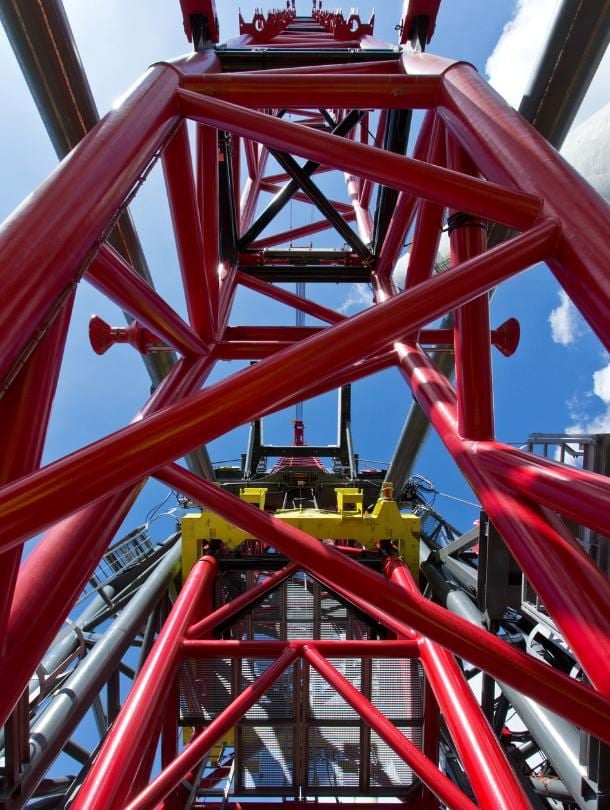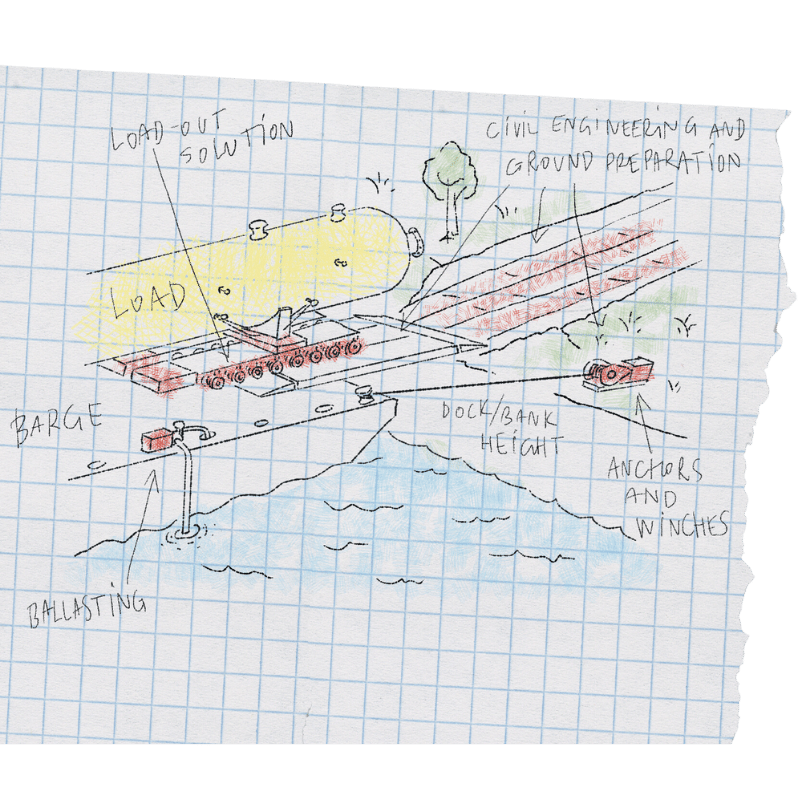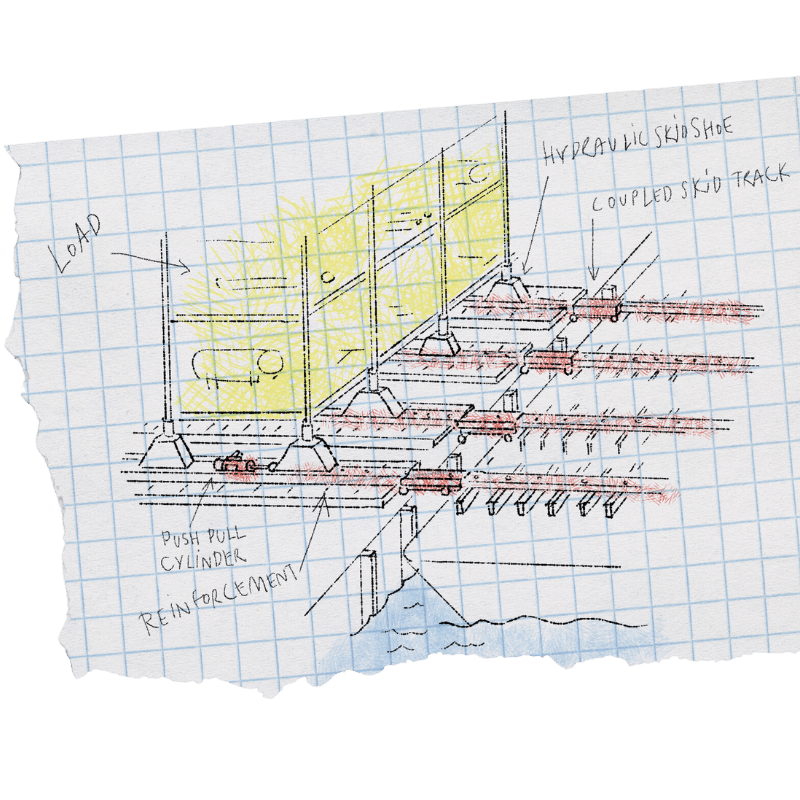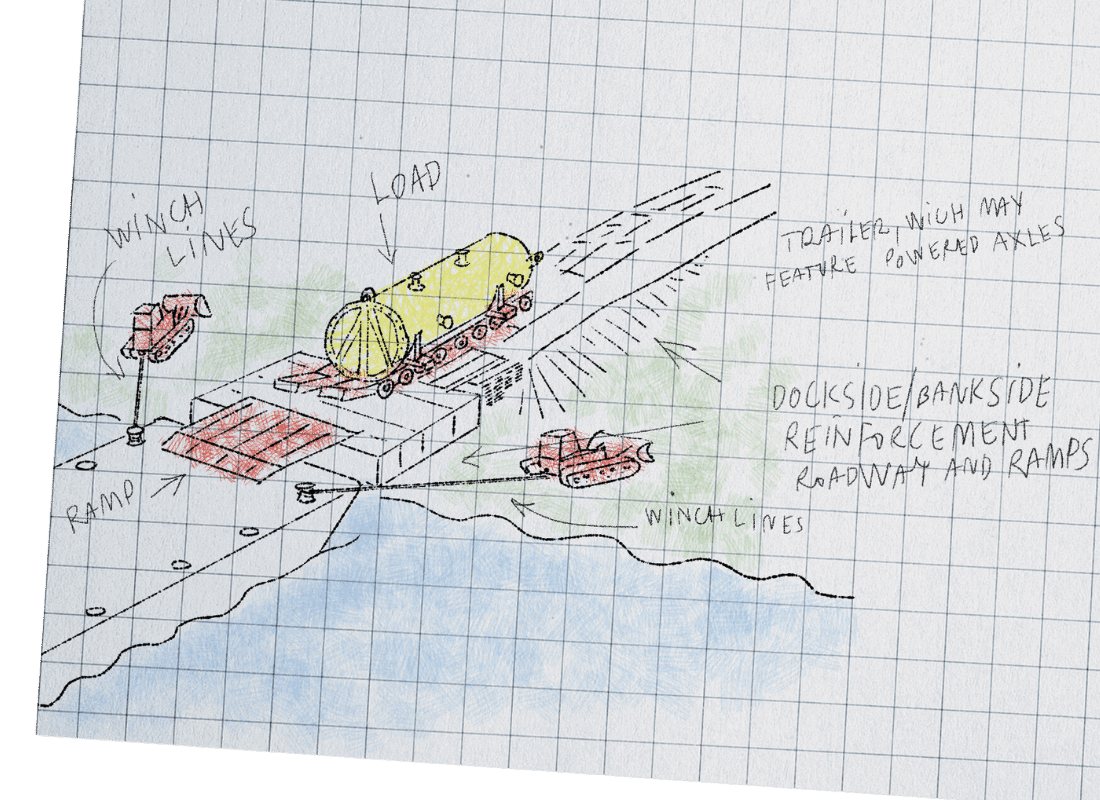Load-outs: Heavy and safe lifting, excellent results
FEATURE

FEATURE


New mining, petrochemical, or oil and gas facilities are often built as modular constructions in locations where safer, more efficient, erection is possible and skilled labor is available. These facilities are then transported to remote locations, or an offshore jacket, via barge or specialist transport vessel ready to be integrated with other components.
Likewise, at the end of a facility’s life, rather than dismantling a structure at sea or near a live plant, large modules and platforms can be transported in one piece elsewhere for reuse or decommissioned. This allows for safer and more cost-effective dismantling and recycling.

There are many factors to consider before a load-out solution is chosen. These include size and nature of the load, the schedule, and load volume.
Additionally, elements such as the location and condition of the load-out site, dock (if there is one), and barge strength or transport vessel specifications will have an impact on the operation. Access routes from the load site to dock alongside water soundings, weather, tides, and swell also need to be assessed.
A safe and effective load-out plan will manage all these factors to ensure the operations meet deadlines while avoiding serious accidents or a damaged load.
Skidding in a straight line to load-out objects from land onto a barge or ship is an age-old technique. Since ancient times, these systems have evolved from pulling loads on sleds with ropes to placing loads on steel or wood skid beams, lubricated with soap or grease.
The key advantage of skidding is that by adding more tracks, you can transport an almost infinite load. Skid tracks also have a small footprint, making them ideal for congested docks or for barges with limited space.
However, this solution cannot transport loads around steep curves or corners. And when strand jacks, or a winch, are used to pull the load along the track, it requires a high break force to start.

The principle behind hydraulic skid systems is the same as conventional pull/skid systems, moving loads along a straight track. But the combination of hydraulic skid shoes and a push/pull system coupled into skid tracks for propulsion delivers unique benefits.
As with traditional skidding, more skid tracks and hydraulic skids shoes can be added to accommodate heavier loads. For example, one skid shoe with a span of just five meters has equivalent lifting power to 20 axle lines of SPMTs, which would span 30 meters.
The addition of hydraulics enables more flexible load spreading and the ability to offer a degree of vertical movement. For more extensive vertical movement, they can be combined with one of Mammoet’s push-up systems. In Mammoet’s in-house designed skidding system, a metal track is fitted with Teflon blocks and a skid shoe or beam with a stainless-steel bottom is placed inside the track.

The combination of Teflon and stainless steel, with a lubricant, requires a much lower break force to get the load moving.
The skid shoe is fitted with a horizontal push–pull cylinder that is locked into a pair of slots fitted to the sides of the skid track. The cylinder expands and the load is pushed along the track. Then the cylinder is unlocked, retracts, and is locked into the next pair of slots.
This system absorbs all the friction forces internally because the push-pull cylinder is locked into the same track as the skid shoe that carries the load. This means that the system can be installed without the need for additional fortifications to keep the track in place.
Load-outs by means of a trailer use a prime mover, such as a tractor, or powered axles. Trailers offer a faster execution and greater maneuverability compared with skid systems.
The cargo being transported is loaded onto the trailer, which is propelled onto the barge by a variety of solutions. These can include a single prime mover, multiple prime movers, hydraulically driven axles and/or a combination of these. Using a trailer over suitable ramps and roadways means the location of the load on land, and at its delivery point on the barge, can be flexible.
Trailers featuring hydraulic suspension spread the cargo’s weight to eliminate peak loading. The suspension can also be used to load the object and unload it onto its sea fastening, which can be preinstalled onto the load or travel with the load onto the barge.

Transporting loads using a Self-Propelled Modular Transporter (SPMT) solution offers many advantages, including being able to transport much larger and heavier loads than when using a trailer. Multiple SPMTs can be added to cope with the size and mass of the load with greater flexibility and speed than a skidding system.
SPMTs allow loads to be transported around corners and obstacles, and the load can be raised and lowered on the system’s hydraulic suspension. Our SPMT solution features a variable width option or scissor system.
The load is spread over a wider base but does not require additional axle lines, which in turn add weight and require more power. Depending on the load-off requirements, the SPMTs can remain on the barge with the load, or the load can be attached to its sea fastening and the SPMTs removed.
